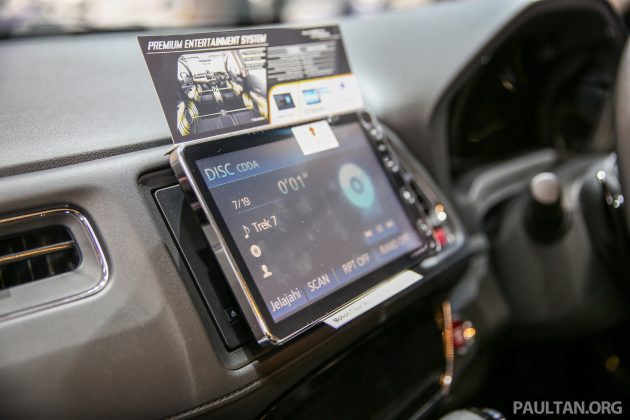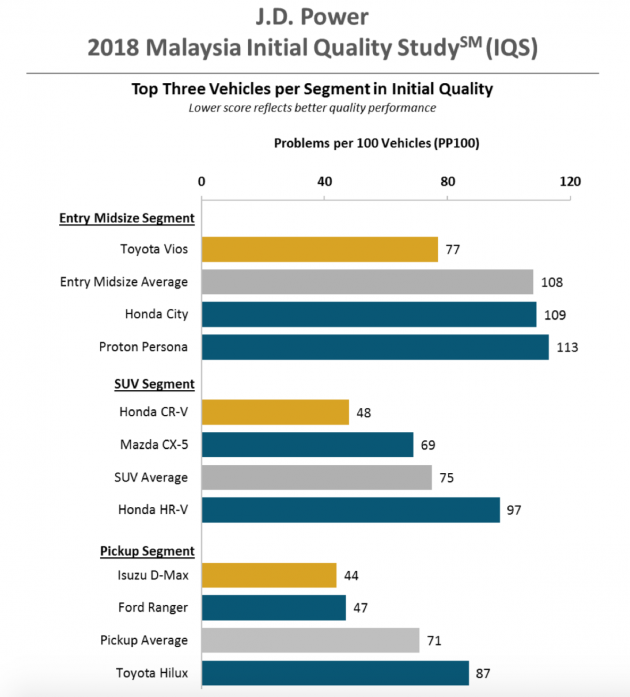According to the latest J.D. Power 2018 Malaysia Initial Quality Study (IQS), nearly half of all problems experienced by new-vehicle owners in Malaysia are design-related. The study examines problems experienced by new-vehicle owners within the first two to six months of ownership following two distinct categories – design-related problems, along with defects and malfunctions.
The findings, which were released earlier today (2017 results here), revealed that 42% of all problems experienced in the initial period of ownership are related to a car’s design of its radio, communications, entertainment and navigation, as well as HVAC (heating, ventilation and air conditioning) systems – the remaining 58% are manufacturing defects and malfunctions.
Among the documented issues by owners involve Bluetooth smartphone pairing and connectivity with different mobile phone brands, as well as issues with media device ports and navigation systems, among others.
Focusing on some statistics, the overall initial quality for the industry recorded an average of 92 problems per 100 vehicles (PP100), with a lower score indicative of better quality performance. J.D. Power pointed out that while problems relating to manufacturing quality (48 PP100) continue to make up the bulk of problems, design-related issues (39 PP100) have increased over the last five years.
The company also discovered that car owners of the two national brands reported a higher problem count on average compared to those who purchased Japanese brands (105 PP100 versus 77 PP100). It’s a similar case when it comes to owners of who have driven over 5,000 km, with national brands having more issues compared to Japanese ones (131 PP100 versus 81 PP100).
In terms of complaints, excessive wind noise became the most cited problem (7.5 PP100), followed by excessive road noise (4.1 PP100) and poor/lack of radio reception (3.1 PP100). Among the top five problems reported, four are design-related problems.
Focusing on the age demographic of car owners, those who are aged 29 years or younger reported more problems (103 PP100) compared to customers who are 30 years or older (82 PP100). The youthful also reported more problems in the audio, communication, entertainment, navigation, exterior and powertrain categories.
Lastly, and this should be obvious to most, new-vehicle owners who have not experienced any problems with their vehicle were 24% more likely to repurchase the same make, with this percentage decreasing to 15% for owners who experience three or more problems.
Based on the study alone, it was found that the Toyota Vios was the least problematic in the entry midsize segment with a score of 77 PP100. That’s far below the its class average of 108 PP100 – the Honda City and Proton Persona have a rating of 109 PP100 and 113 PP100, respectively.
As for the SUV segment, the CR-V received a score of 48 PP100 (class average is 69 PP100), putting it ahead of the Mazda CX-5 (69 PP100) and Honda HR-V (97 PP100). Meanwhile, the Isuzu D-Max tops the pick-up segment with a score of 44 PP100, and it is joined by the Ford Ranger (47 PP100) above the class average of 71 PP100. Conversely, the Toyota Hilux fared the worst, with a score of 87 PP100.
The results of this study factored responses from 2,766 new car owners who purchased their vehicles between September 2017 and July 2018. The study, which was fielded between March and September 2018, includes 55 passenger cars, pick-up trucks and utility vehicles from 13 car brands. Over to you – did you see this coming? Have you experienced any issues with your new-car purchase? Sound off in the comments below.
Source: Read Full Article





